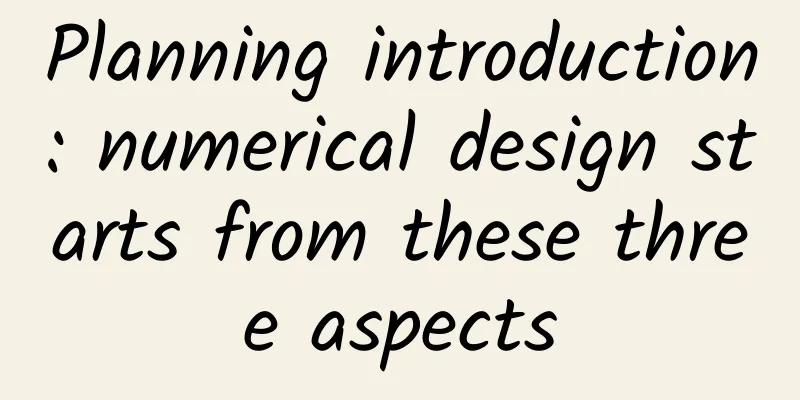Planning introduction: numerical design starts from these three aspects

|
Numerical design is actually born for experience, feeling (fun) and strategy. Tradition includes three parts: combat, growth, and economy. fighting In fact, I think a real numerical planner must make his own battles, occupations, skill systems and levels, because these four are inevitable. The relationship between the first three lies in the management and application of combat elements. For a battle from scratch, the numerical planner must first think clearly about what kind of combat experience is needed before organizing the necessary combat elements to achieve this combat experience. Instead of randomly designing some redundant combat elements. It is not impossible to directly copy the ready-made combat form, but this cannot be called powerful. At most, you are a craftsman, not a designer. To do a battle, you must understand the meaning of any combat element and setting. For example, many numerical plans have never thought about the following issues: Why are there spell defense and physical defense in turn-based games, or why is damage divided into different attributes? The combat elements in turn-based games are limited. By adding this strategic attribute, you can make a difference in level design or combat strategy. But this is just a plan, not a necessity. Remember, in orthodox combat games, except for life and attack, all other attributes are not necessary. Think about what kind of combat experience (strategy) you need, and then design such an attribute. How to make an interesting (strategic) combat/core game system Sorry to equate fun with strategy, but I believe strategy is an important part of fun, along with performance, of course. What you need to understand about combat is that it is actually the process of managing and applying combat elements. The player's profession uses different call interfaces (i.e. skills) to achieve combat goals. Professions can be seen as encapsulations of attributes and skills. So, if you think this way, then how to make combat strategic is actually the following points:
The above 4 points apply to all game types. The essence and steps of career/skill design The essence of a profession is the encapsulation of skills and attributes. To create a distinctive profession or hero, you must start with the concept, then select the combat elements that are suitable for him to call, and then use your creativity to call these elements. For example, in LOL, I want to design a profession, the Phantom Archer. The concept is that the archer is a bitch/archer who is erratic, dodges around, and shoots people invisibly. The characteristics are fragile, mainly avoiding attacks by dodging or phase, high sudden damage, and very easy to operate. OK, let's choose an element. Because of his erratic figure and strong operability, it is easy for us to think of a combat element: distance. High sudden damage, ok, critical hit. Then if we think deeply about these two points, we can think of the following design ideas: An archer who is very fragile but can flash. The critical hit chance of the attack depends on the attack distance. To achieve maximum output, it is necessary to control the distance from the target. OK, then you can roughly design the skill effects: flash, deceleration, single damage skills, phase skills. Passive skills are: the critical hit rate increases with the increase of attack distance. Equipment ideas: critical hit damage, attack speed, movement speed, etc. Look at the Wandering Mage, isn't that how he was designed? A high-burst mage, features: spell combo. Utilizes elements: maximum mana, skill CD. Attribute Balance In fact, the balance I understand is not the complete balance of values. Since there are many interesting battles, complete balance is impossible (it is also undefinable, so it is meaningless to pursue it). Generally speaking, it is enough to establish a numerical model that can be verified by mathematics at the beginning to deduce the attribute balance output. You will definitely leave it aside when adjusting the balance later. Its significance is that nothing will go wrong under normal circumstances, that's enough. What he actually did was to determine the combat formula system (in fact, this is also driven by experience. Different combat formula systems produce different combat experiences, atk-def, characteristics, large marginal effects, upper and lower limits, and defense penetration. The multiplication formula of World of Warcraft focuses on the accumulation of attributes, the stability of single-point attribute values, no defense penetration, etc.), and use the formula system and combat situations to deduce various attribute values. Obtain attribute delivery plans through single attribute values. You can also force the use of the level-attribute upper and lower limits method to stabilize attribute delivery. You can do whatever you want. The key is to look at actual needs and experience needs. growing up This is actually what we talk about a lot now. The cost-effectiveness, positioning, and relevance of various growth paths. The pressure-release rhythm during the game (the so-called interest curve, experience curve... a bunch of high-sounding terms). The principle is very simple, but it also takes the most time, and you have to grind it slowly. economy It is now popular to do closed-loop in this area. The release, recycling, and circulation of resources. In addition to numerical values, it is usually necessary to cooperate with rule design. |
<<: A developer with 11 years of experience talks about how to make an independent game masterpiece
>>: Some slightly more advanced uses of CocoaPods
Recommend
Meituan Youxuan product analysis!
On September 14, 2021, Alibaba Community E-Commer...
How do fish avoid danger? What are some ways to defend against enemies?
Produced by: Science Popularization China Author:...
College Entrance Examination Graduation Season Topic Marketing
How to do topic marketing during the college entr...
Big data reveals the image of car owners: Cadillac and MINI are caught in the crossfire
Recently, AutoNavi Maps and the Ministry of Trans...
Mainstream manufacturers are all competing, and have become seriously homogenized. How should smart cockpits innovate?
Let’s first discuss a question: Do you think the ...
There are two ages most prone to "cliff-like aging". These habits that accelerate aging should be changed.
People usually do not age at a uniform rate, and ...
The Qin Dynasty fell? Maybe it’s not entirely Qin Shi Huang’s fault…|BoLan Daily
The Qin Dynasty fell? Maybe it’s not entirely Qin...
How to successfully install and run Windows 3.1 on iPad
Fast Company's technology editor Harry McCrac...
If this group of people are infected with influenza, use cough suppressants with caution! Symptoms may be masked
The year just passed There has been a lot of news...
Are meteorological proverbs reliable? Is there any scientific basis for predicting the weather by looking at the clouds?
Author: Science History Commentary Wu Jingping Wh...
BMW and Baidu join forces to promote the development of autonomous driving ecosystem
On July 10, Baidu and BMW jointly announced that ...
AARRR model | 4 key points to attract new users!
High-quality new customer acquisition is insepara...
Want to lose weight but can’t control your diet? Let your brain help!
Obesity, as a complex chronic disease, leads to a...
48 hours later at WWDC19, you will see new changes from Apple
In less than two days, at 1:00 a.m. Beijing time ...
Fu Wei's talk about group site SEO series 4: How do those who do group site solve the content problem?
In the previous sharing sessions, we talked about...









